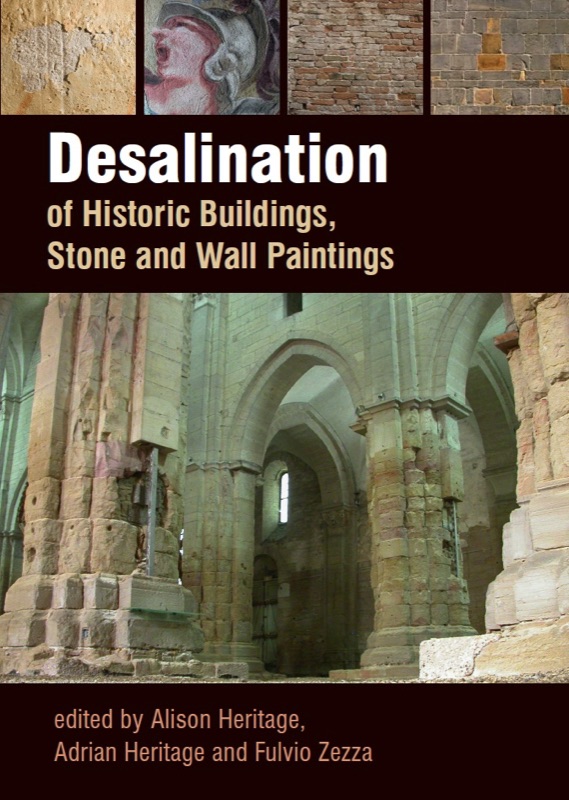The papers collected in this volume are the fruits of the Desalination project - a European research project which involved representatives of the private sector, universities, industry, research centres and public authorities. This project examined the use of poultices to treat salt damage problems in porous objects (a widespread standard practice for at least three decades in cultural heritage conservation). However, as with many conservation interventions, while the poultice materials are (in large part) removable, the effects of this treatment are non-reversible.
Topics include:
• The choice of one poultice material over another;
• Pre-treatment assessment of object and the salt deterioration;
• What substrate and/or salt analysis can/should be undertaken;
• Salts and their spatial distribution within objects; and
• The efficacy and functionality and potential dangers of typical poulticing methods on different material substrates.
INTRODUCTION
The Desalination project
Fulvio Zezza
Current use of poultices in conservation
Adrian Heritage, Alison Heritage, Friederike Funke, Vèronique Vergés-Belmin, Ann Bourgès
The wall paintings in Tirsted Church – a history of failed salt treatments
Isabelle Brajer and Poul Klenz Larsen
WORKING PRINCIPLES OF POULTICE SYSTEMS
Physical principles affecting the efficiency of salt extraction by poulticing
Leo Pel, Alison Heritage, Victoria Voronina
Optimising the extraction of soluble salts from porous materials by poultices
Alison Heritage, Barbara Lubelli, Victoria Voronina, Leo Pel.
Salt transport in poultice/substrate systems
Vica Voronina, Leo Pel
Electrokinetic desalination: can it work?
Kashif Kamran, L. Pel, A. Heritage, H.P. Huinink and O.C.G. Adan
CHARACTERISTICS AND WORKING PROPERTIES OF POULTICE SYSTEMS
Practical advice regarding consistency and working properties of poultices
Ann Bourgès, Véronique Vergès-Belmin
Desalination of masonry structures: research towards the development of a modular system of poultices
B. Lubelli, R.P.J. van Hees & Georg Hilbert
Salt extraction with cellulose poultices in stone and wall paintings conservation: myths and realities
Véronique Vergès Belmin, Alison Heritage and Ann Bourgès
Water bath desalination followed by poultice treatment
Christoph Franzen, Frank Hoferick, Steffen Laue, Heiner Siedel
ASSESSMENT BEFORE AND AFTER TREATMENT
Desalination of historic masonry Pre-investigation and after-care
Rob van Hees, Barbara Lubellli
NDT methodology to assess substrate salt damage and desalination treatment
Fulvio Zezza
Counter indications for poulticing treatments: Schloss Augustusburg Brühl, a case study
Alison Heritage, Adrian Heritage and Friederike Funke
PRACTICAL POSSIBILITIES AND LIMITATIONS
Desalination of a low porosity limestone masonry
Ann Bourgès, Véronique Vergès-Belmin
Desalination of historical brick masonry: the case of the Waag building in Amsterdam
Barbara Lubelli and R.P.J. van Hees,
Effectiveness of poultices by perceptive and estimative parameters
Eloisa Di Sipio and Fulvio Zezza
A New Tool for Knowledge Transfer and Research: SalzWiki - a Specialized Wiki with a Repository on „ Salt damage in cultural property”
Hans-Jürgen Schwarz and Angela Weyer
Closing remarks
Fulvio Zezza
